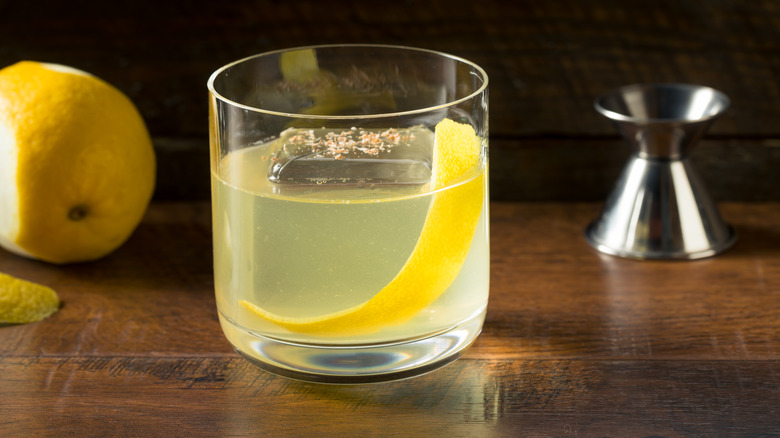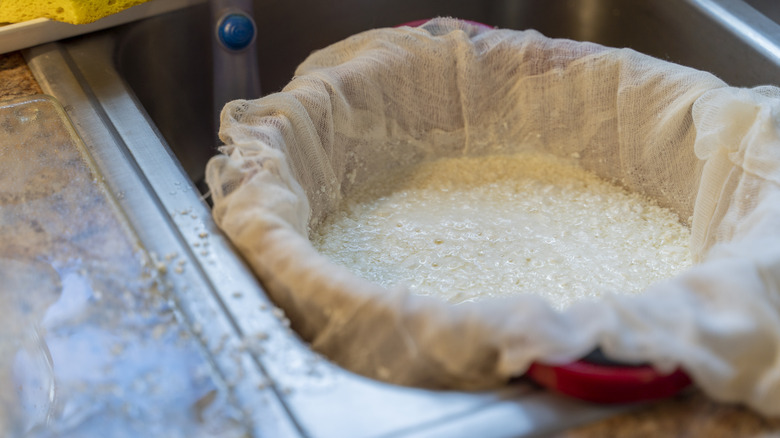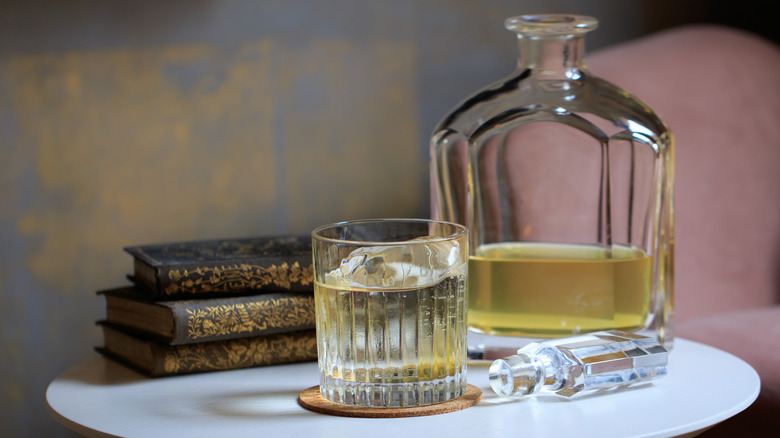Why Clarified Cocktails Taste Better Than Usual
Clarified cocktails are a hot trend with an old history. You've probably seen them popping up on bar menus, or maybe you've even sampled them yourself. Clarified cocktails are crystal clear drinks with subtle and more nuanced flavors than you'd typically expect from spirits. They're pleasing to the eye, and even more so to the tongue, offering a smooth mouthfeel and removing off-putting bitterness.
These cocktails exploded into the bar scene in 2023, following a gradual rise in popularity over the past decade, but the technique is centuries old. Though seemingly forgotten throughout most of the 1900s, clarified cocktails were a staple of the 18th and 19th centuries. Benjamin Franklin, Charles Dickens, and Queen Victoria were all known to favor this unique take on spirits.
The earliest recipe for a clarified cocktail reveals a great deal about the inner workings of this filtration technique. Published in 1711 by English writer Mary Rockett, the cocktail in question is called milk punch. Now, milk probably isn't the first ingredient you'd think of when it comes to alcoholic beverages, but it's actually the secret behind all clarified cocktails.
The science behind clarified cocktails
Clarified cocktails are made via a technique called milk-washing. This is done by mixing spirits with cold milk and adding an acid, like lemon juice. Let that sit in the fridge for about an hour, and the milk will curdle, after which point you can pour the whole mixture through a cheesecloth or coffee filter to strain out the solids. You'll be left with a completely translucent liquid to use as the base for your cocktails. Alternatively, you can pre-mix the cocktail, then add it to milk and perform the same process. Not only will it render the drink clear, but it will also remove bitter and astringent flavors, even from cocktails that contain bitters.
Clarification works because the proteins in milk naturally bind to certain chemical compounds, most notably polyphenols. Polyphenols are found in many of the plants we use to make foods and beverages, but they tend to taste bitter. This is particularly noticeable in spirits like whiskey. Since whiskey is aged in oak barrels, the wood infuses the liquor with particularly bitter polyphenols, known as tannins. If you were to milk-wash that whiskey, the milk proteins would bind to those tannins, trapping them (along with other microscopic impurities) as the milk curdles. When you strain out all the curds, those bitter compounds go with them, and you'll be able to taste more dimension in your cocktail.
Tips for making clarified cocktails at home
Milk-washing has become a popular fixture of the bar scene, but you can easily do it yourself at home. Just mix your cocktail or spirit of choice with cold milk and rest it in the fridge for an hour before straining. There are a few tips you should keep in mind, though.
The first (and most important) tip is to not forget the acid factor. Acid is what makes milk curdle, so you'll need to add some to your cocktail. Cocktails like the tried and true Bloody Mary or the classic hurricane have acidic ingredients in them, which makes them perfect for clarification. Plus, presenting your guests with a see-through Bloody Mary is a serious mixology flex. If you're clarifying a non-acidic cocktail or a pure spirit on its own, you'll need to add some lemon juice to trigger the reaction.
Some types of cocktails benefit from clarification more than others. One of the best ways to utilize clarification is in carbonated cocktails. Juices are naturally full of particulate matter from the fruit pulp — hence why orange juice is opaque — and this presents a problem to mixologists, because even microscopic specks of pulp can prevent carbonated liquids from retaining bubbles. Next time you make a gin and tonic, try clarifying not only the gin, but a little lime juice as well, and use that in place of the traditional squeeze of lime. You should find that the drink stays fizzy for much longer.


